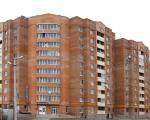How to remove the encumbrance from the apartment - the legislative framework
The presence of requirements approved by law or authorities that limit the ability of a citizen to dispose of property at his own discretion is called an encumbrance.
There are several types of limitation of rights to real estate:
- easement - permission to exploit someone else's property within certain limits. For example, it can be issued for works on laying communications affecting the territory of a land plot.
- Mortgage - limiting the grounds for the use of property by its owner.
- Rent - encumbrance imposed in connection with the conclusion of an agreement on life maintenance with a dependent. Terminates after the death of the recipient of the funds stipulated by the agreement. Registered together with a mortgage. Thus, two restrictions are imposed on real estate at the same time. Moreover, the second can be removed only through the court. Since the law requires a statement from both parties, which is impossible for obvious reasons.
- Trust management - disposal of the object by a third party for profit in favor of the owner.
- Rent - an agreement to operate an asset for a cash consideration.
- Arrest - ban on transactions.
- Concession agreement - providing for a certain period of time the opportunity to use the property as follows: to carry out reconstruction and carry out activities related to it.
- The object is a cultural heritage. This imposes additional responsibilities for its maintenance and preservation.
- A ban on the sale of housing in an emergency building, imposed by authorized structures and entered in the USRR. If transactions for the sale of such premises are not prohibited, then it is the responsibility of the seller to notify buyers of the status of the premises, Otherwise, they will be able to terminate the contract in court.
It should be noted that the regulations of the Russian Federation approved other conditions for the pledge of real estate and there are quite a lot of them.
The encumbrance of the rights to residential premises is necessarily fixed by the relevant authorities. When making a purchase and sale transaction, you can order an extract from the Unified State Register of Rights. This will protect the buyer from an unscrupulous seller who wants to hide the fact of the pledge.
On the other hand, the restriction placed on property does not deprive the owner of the right to sell and passes to the new owner along with the object.
Is it possible and necessary to remove the encumbrance from the apartment
First of all, it is worth paying off restrictions on the use of residential real estate if they impede transactions in relation to it. In any case, this is possible only after reaching an agreement with the pledgee.
The legislative framework
- The norm of the Civil Code of the Russian Federation establishes that the goods sold must be exempt from the rights of third parties. Otherwise, the buyer may demand termination of the transaction or a price reduction. Judicial practice in this regard suggests that then here we are talking about a restriction that prevents the ability to dispose of one's own property.
- To conclude a contract for the sale of residential premises, on which an encumbrance is imposed, the written consent of the lender is required.
- The person acquiring the object must be informed that that he is in custody.
- Alienation of real estate with encumbrance is impossible only in the event of her arrest or if there is an entry in the Unified State Register on the prohibition of the transaction due to the emergency condition of the house.
- The restriction is considered to be a lease agreement concluded for a period over one year.
- It is possible to conclude an agreement on property lease without notifying the pledgee in the event that unless otherwise agreed in writing.
- Limitation of the rights to use a residential facility is inseparable from it. Therefore, when the property is sold, it passes to the new owner.
So, it is possible to remove the restriction of the right to dispose of property from a dwelling with the written permission of the creditor
This is necessary in the case when there are obstacles to the transaction with such housing. The possibility of repayment depends on the reason for imposing sanctions.
How to find out if an encumbrance is imposed on an apartment
To check information about the availability of collateral in relation to a particular object, you can order an extract from the ERGP.
There are several ways to get this information:
- Order on the Rosreestr website directly from your computer. Delivery time is five business days. The cost is 150 rubles. This option will undoubtedly save time and nerves. And at the same time, there will be no seal and signature on the electronic document. Such an extract will help to verify the presence or absence of collateral. But it cannot be used as official paper.
- Apply personally to the office of Rosreestr or to the Multifunctional Center. You should have with you: a passport, an application and a receipt for payment of the fee - 200 rubles. Within the same period as for applying via the Internet, an extract certified in accordance with the requirements of the law is provided.
Unfortunately, not all methods of restricting rights are subject to registration. For example, a home seller purchased it with the involvement of maternity capital. In this case, he gives a notarial obligation to allocate shares to all family members, including minor children. Thus, the transaction is complicated by obtaining permission from the guardianship authorities.
Therefore, some irresponsible citizens refuse to fulfill such a promise, since it is not recorded in the state register. Subsequently, the buyer of this apartment will become a participant in litigation with the guardianship authorities.
Children who have reached the age of majority and are deprived of their legal property can also sue. As a result, the contract is declared invalid. The seller will have to return the money. But the problem is that due to inflation and rising prices, it will no longer be possible to purchase an equivalent housing for this amount. In addition, funds can be reimbursed in installments.(if it is not possible to give everything at once). And then the return can be delayed for years.
How to remove the encumbrance from an apartment taken on a mortgage
To remove the existing restrictions imposed on the right to use residential premises, you will need to perform a certain sequence of actions:
- Pay off your bank debt in full, including fines, penalties and interest specified in the contract.
- Contact the bank, which is the mortgagee, with the requirement to send a joint application for repayment of the encumbrance of the acquired housing to the state registration authorities.
- Submit the necessary paperwork to Rosreestr at the location of the property.
- After checking the documentation, the record that the apartment is pledged is excluded. A special mark is placed on the certificate of ownership, confirming this fact.
How to remove the encumbrance from the apartment through the court
If a dispute arises between the owner of the property and the pledgee regarding the fulfillment of obligations. Or, for some reason, it is impossible to comply with the current legislation to pay off the imposed restrictions. Then the issue has to be resolved in court.
To do this, you need to take the following steps:
- Draw up a claim.
- Provide evidence of full compliance with all terms of the agreement.
- Get a positive decision.
- Within three working days after the submission of the package of documents, receive a certificate with a stamp on the abolition of the limit on transactions.
How to sell an apartment with an encumbrance
First you need to get consent to the deal of the mortgagee. If a bank acts in its role and we are talking about a mortgage loan, then there are two ways out of this situation:
- If the buyer does not have the full cost of housing on hand, then the loan can be reissued to him.
- An agreement is concluded on the assignment of rights and obligations under the contract.
- A transaction for the purchase and sale of an object is drawn up.
- The new owner signs the necessary mortgage paperwork with the bank.
- During the operation, the debt to the financial institution will be fully repaid.
- A contract is drawn up, certified by a notary.
- The loan amount is fixed at a certain point in time.
- The buyer extinguishes the seller's obligations to the bank. Then he receives the appropriate certificate and mortgage in his hands.
- Funds in the amount of the difference between the debt and the price of property are pledged in a cell rented in a specialized institution.
- The removal of restrictions is registered.
- The main contract of sale is drawn up and fixed in the relevant authorities. The buyer is issued a certificate of ownership.
- The seller receives money from the cell by presenting a document on the change of ownership or an extract from the USRR.
Do not forget that the final scheme of the transaction can only be approved with the participation of the collateral holder.
Required documents
To pay off the encumbrance, you will need to provide the following papers:
- Mortgage owner's statement.
- Joint statement by both parties.
- The obligation itself with a mark of its full fulfillment.
- Certificate of ownership.
- Contract of sale.
- Confirmation of payment of the fee (if required).
How much does it cost to remove the encumbrance from the apartment
Government agencies do not charge for such actions. You will need to pay 350 rubles in case if you need to get a new certificate without a mark on restrictions.


What to do if the seller does not remove the encumbrance from the apartment
If you have all the documents confirming the fulfillment of obligations, there are two options for solving the problem:
- Invite the former owner of the property to issue a power of attorney and perform all the actions on their own.
- Go to court. Since there are no grounds for restrictions, he will take the side of the owner.
Thus, if all debts are paid, and the necessary conditions are met, you can safely contact the Federal Service for State Registration, Cadastre and Cartography.
Have with you:
- Stakeholder Statements.
- Proof of ownership.
- Liability document.
After three days, you can receive a certificate with a mark of exemption from restrictions.




